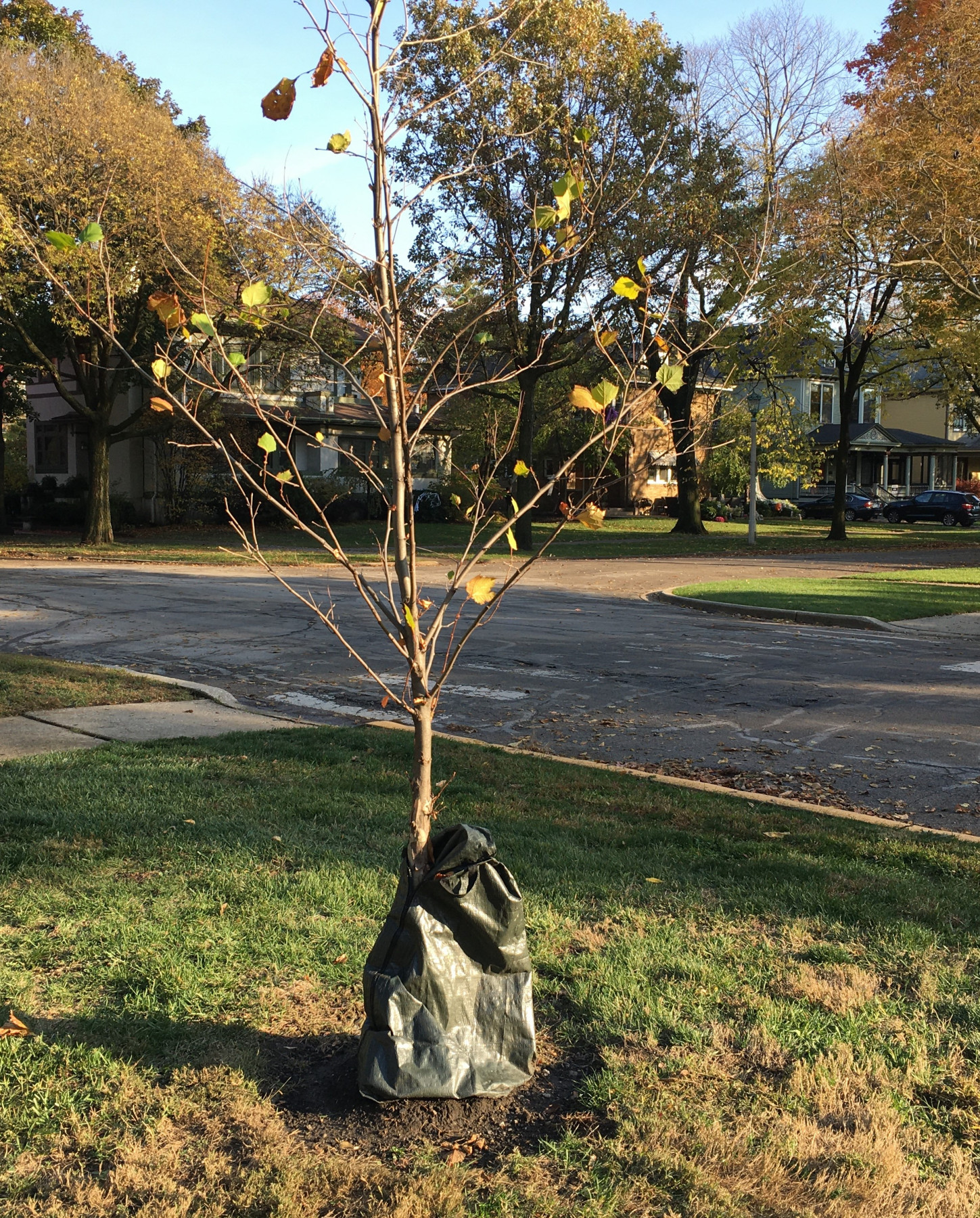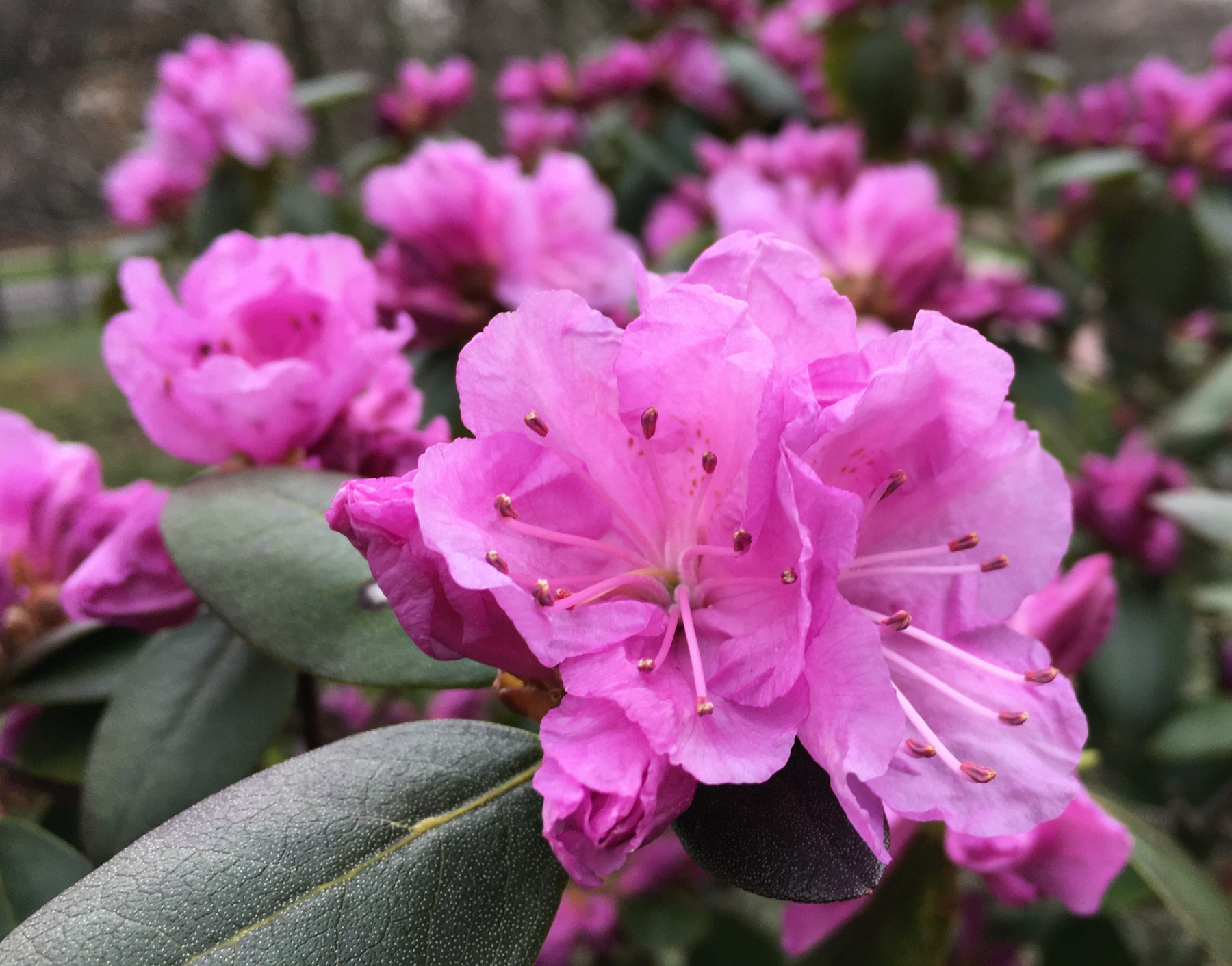
My neighbor has set up a gigantic, animated witch balloon (Halloween decorating seems to have escalated this year). Meanwhile, I’ve set up a sprinkler.
Deep in October, with the first hard freeze due any day, most people are done with gardening, apart from raking leaves. But I’m still busy with the hose. Why on earth? Because I know that if my plants go into winter with a topped-up water supply, they have a much better chance of thriving next spring.
Early this fall, I transplanted a number of shrubs. I also established new beds of hostas in an area around trees where I’ve finally given up on growing grass in the shade. As careful as I was when transplanting and dividing, I know that all those plants lost the bulk of their roots in the process. It will take them a year or more to grow a healthy network of new feeder roots—the tiny, almost microscopically slender roots that do the actual work of absorbing water and nutrients from the soil.
As long as my plants are short on roots, they can’t absorb water the way established plants do. They can’t reach out to find water in a broad area of soil, and even when there is moisture right around their surviving roots, they have a limited capacity to absorb it. So they need my help, with regular doses of water they can sip through the roots they still have.
Water is necessary for everything plants do, and long after leaves fall in autumn and the landscape looks bare, plants are at work. Roots, including the roots of the spring-blooming bulbs I’ve been planting this fall, keep growing until the ground freezes, which may not be for another six weeks or more.
Even then, below the level of frozen soil—which may only be the top few inches, depending on the weather—beneficial microorganisms and fungi that trade water and nutrients with plants’ roots are also still at work. They all need water.
I’m also watering evergreens. They are more vulnerable than deciduous trees and shrubs because they never fully go dormant in winter.
My maples and serviceberries and hydrangeas have a simple strategy for getting through the winter: They abandon their leaves, stash their food supply down in their roots, and basically go to sleep until spring, like bears in a den. That way, they can protect themselves from cold and conserve their resources.

But evergreens keep their leaves—the green needles that cheer the winter landscape and deck our halls. Those leaves need to be full of water, or they will dry out and turn brown in the cold, dry winter winds. Broadleaf evergreens, such as boxwoods and rhododendrons, are even more vulnerable, because their wide, flat leaves have more surface area from which water can evaporate. The more water I can give all kinds of evergreens to store away in the autumn, the safer they will be.
When I water, I’m also preparing my plants for spring by making sure there will be a reservoir of moisture in the soil. It’s the water in soil that freezes. When that ice starts to thaw, next February and March, the meltwater will be available for needy seeds and sprouts.
We often assume that autumn will bring plenty of rainfall, so watering isn’t an issue. This was never a safe assumption. However, as the changing climate makes Midwestern weather more variable and unpredictable, it’s even more important not to take chances. We may get lucky with rain, or we may not.
My neighbors who fill their yards with fluttering fabric ghosts and fake gravestones think I’m a little weird for puttering around with the hose. But I’m simply tucking my garden to bed with the water it needs.


